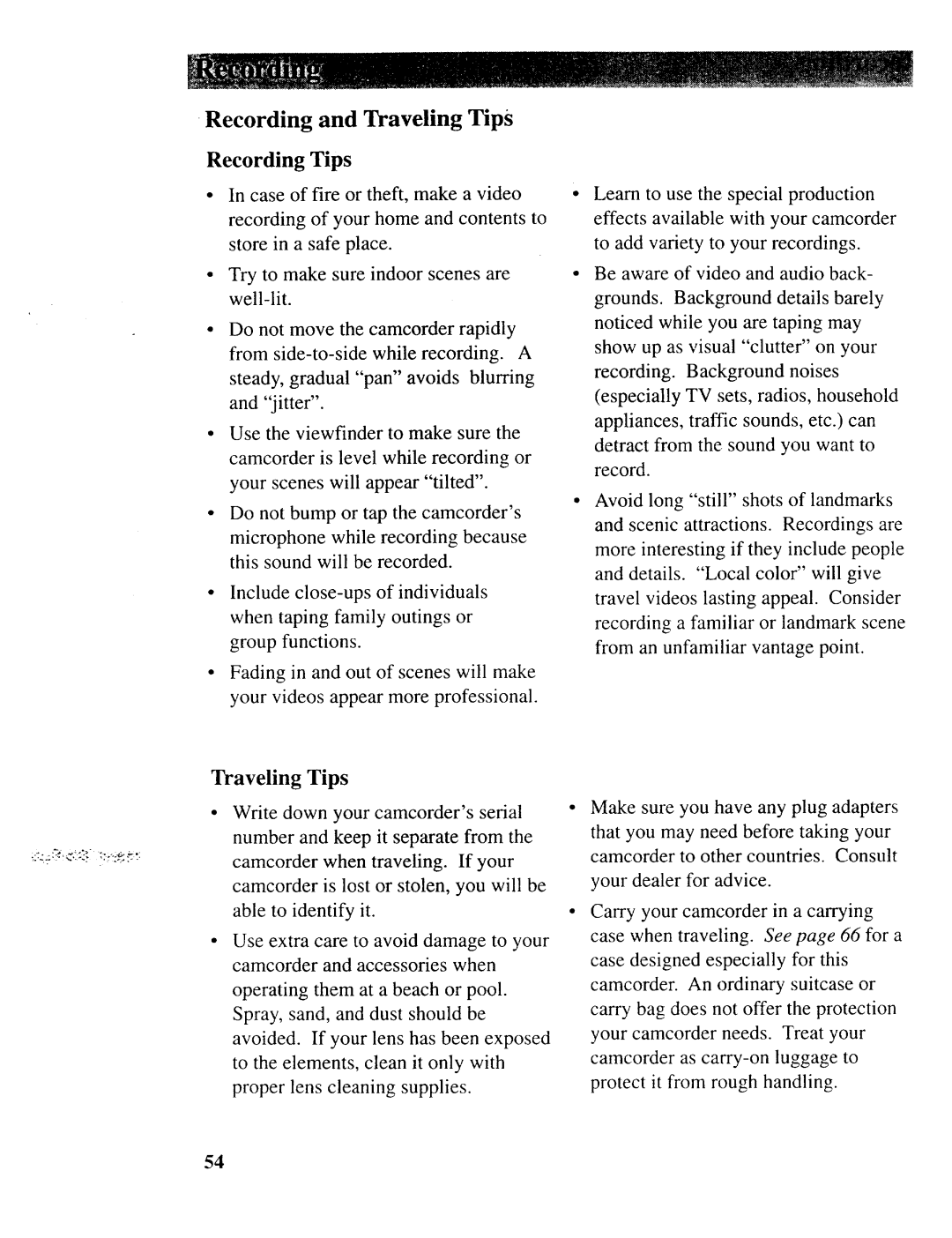
Recording and Traveling Tips
Recording Tips
•In case of fire or theft, make a video recording of your home and contents to store in a safe place.
•Try to make sure indoor scenes are
•Do not move the camcorder rapidly
from
•Use the viewfinder to make sure the
camcorder is level while recording or your scenes will appear "tilted".
•Do not bump or tap the camcorder's
microphone while recording because this sound will be recorded.
•Include
•Fading in and out of scenes will make your videos appear more professional.
•Learn to use the special production effects available with your camcorder to add variety to your recordings.
•Be aware of video and audio back-
grounds. Background details barely noticed while you are taping may show up as visual "clutter" on your
recording. Background noises (especially TV sets, radios, household
appliances, traffic sounds, etc.) can detract from the sound you want to record.
Avoid long "still" shots of landmarks
and scenic attractions. Recordings are more interesting if they include people and details. "Local color" will give travel videos lasting appeal. Consider recording a familiar or landmark scene from an unfamiliar vantage point.
Traveling Tips
Write down your camcorder's serial number and keep it separate from the
camcorder when traveling. If your
camcorder is lost or stolen, you will be able to identify it.
Use extra care to avoid damage to your
camcorder and accessories when operating them at a beach or pool. Spray, sand, and dust should be
avoided. If your lens has been exposed to the elements, clean it only with proper lens cleaning supplies.
Make sure you have any plug adapters that you may need before taking your
camcorder to other countries. Consult your dealer for advice.
Carry your camcorder in a carrying
case when traveling. See page 66 for a case designed especially for this
camcorder. An ordinary suitcase or carry bag does not offer the protection your camcorder needs. Treat your camcorder as
54
